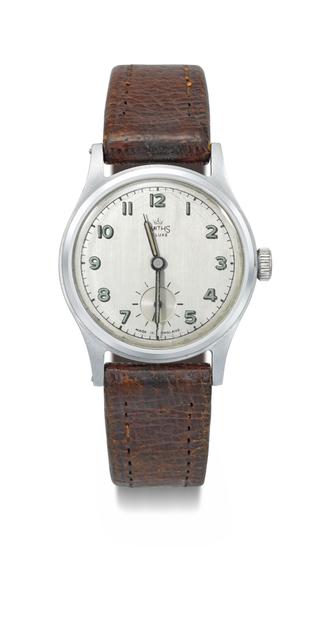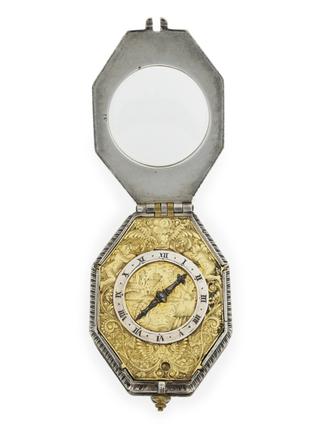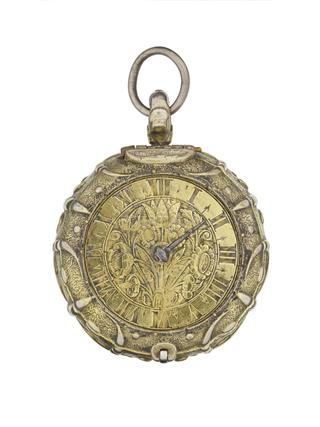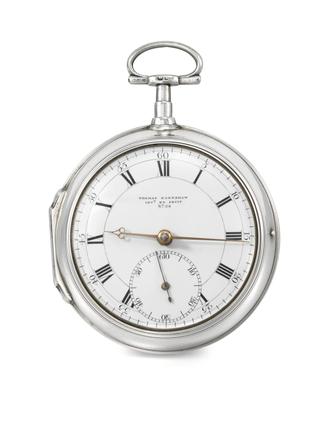




Anchor escapement, eight-day, striking longcase by Edward East London.
The oak case, veneered in walnut and floral marquetry, has been altered to fit the movement, which is earlier.
The 9¼-inch brass dial has a narrow silvered hour circle with minute figures at every 5, engraved spandrels, and is signed 'Edwardus East Londini'. The two-train movement has count-wheel striking and bolt-and-shutter maintaining power. The movement dates to around 1675 and the case c.1685.
Edward East, a free Goldsmith and probably a banker, became an Assistant of the Clockmakers’ Company in 1632. He was elected Master in 1645 and 1652 and was appointed ‘Chief Clockmaker to the King’ in 1660. He lived to be 94.
Clockmakers' Museum No. 544
Details
- Category:
- Clockmakers
- Collection:
- The Worshipful Company of Clockmakers
- Object Number:
- L2015-3429
- Materials:
- oak (wood), walnut (wood), wood (unidentified), brass (copper, zinc alloy), steel (metal), lead (metal), glass and silvered brass
- type:
- longcase clock and anchor escapement
- credit:
- Lent by the Worshipful Company of Clockmakers




